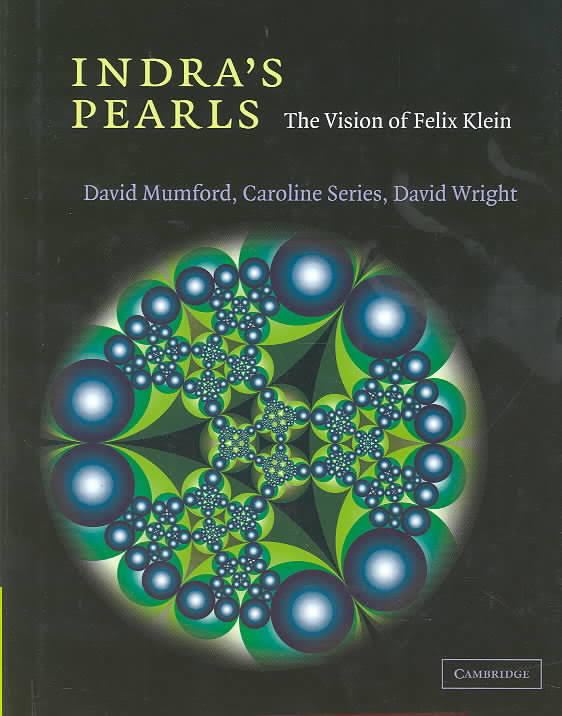9 /10 1 Votes9
Language English Publication date 2002 ISBN 978-0-521-35253-6 Genre Non-fiction OCLC 49859120 | 4.5/5 Goodreads Subject Geometry Media type Print (hardback) Originally published 2002 Country United Kingdom | |||||||||||||||||||||||||||||||||
 | ||||||||||||||||||||||||||||||||||
Similar Works by David Mumford, Mathematics books, Geometry books | ||||||||||||||||||||||||||||||||||
Indra's Pearls: The Vision of Felix Klein is a geometry book written by David Mumford, Caroline Series and David Wright, and published by Cambridge University Press in 2002.
Contents
The book explores the patterns created by iterating conformal maps of the complex plane called Möbius transformations, and their connections with symmetry and self-similarity. These patterns were glimpsed by German mathematician Felix Klein, but modern computer graphics allows them to be fully visualised and explored in detail.
Title
The book's title refers to Indra's net, a metaphorical object described in the Buddhist text of the Flower Garland Sutra. Indra's net consists of an infinite array of gossamer strands and pearls. The frontispiece to Indra's Pearls quotes the following description:
In the glistening surface of each pearl are reflected all the other pearls ... In each reflection, again are reflected all the infinitely many other pearls, so that by this process, reflections of reflections continue without end.The allusion to Felix Klein's "vision" is a reference to Klein's early investigations of Schottky groups and hand-drawn plots of their limit sets. It also refers to Klein's wider vision of the connections between group theory, symmetry and geometry - see Erlangen program.
Contents
The contents of Indra's Pearls are as follows:
Importance
Indra's Pearls is unusual because it aims to give the reader a sense of the development of a real-life mathematical investigation, rather than just a formal presentation of the final results. It covers a broad span of topics, showing interconnections among geometry, number theory, abstract algebra and computer graphics. It shows how computers are used by contemporary mathematicians. It uses computer graphics, diagrams and cartoons to enhance its written explanations. In the authors' own words:
Our dream is that this book will reveal to our readers that mathematics is not alien and remote but just a very human exploration of the patterns of the world, one which thrives on play and surprise and beauty - Indra's Pearls p viii.